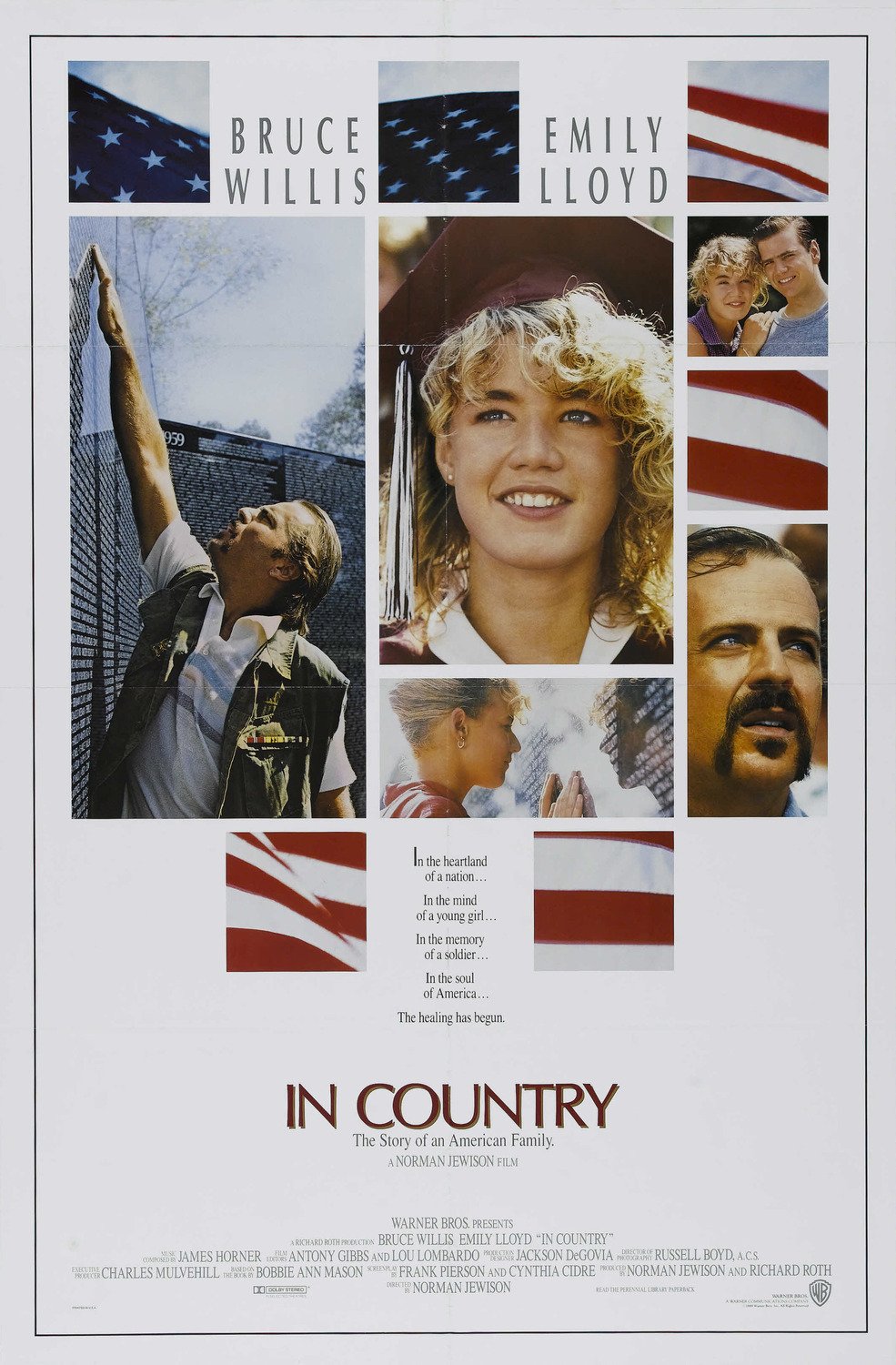Bruno-Vision: In Country
Welcome back once again to Bruno-Vision! A deep dive into the career of Bruce Willis by yours truly, Robert Jordan Hunt.
Last I left you we had just learned how the hell Bruce Willis, Comedy Star, landed the role of hardened yet vulnerable detective John McClane and became an instant action icon with the release of Die Hard.
Thanks to that films’ success, Bruce could do any movie he wanted (though Hollywood was eager to cash in on his newly minted action bonafides), but rather than cash in and immediately sign up for Die Hard 2 (which he would end up doing the following year), Bruce wanted to flex his acting muscles a bit. I mean, he had just successfully jumped from comic actor to action icon in one move, why not try again? So for his next role he chose to play Emmett Smith (not that one), a Vietnam Vet dealing with the fog of war in the film In Country.
Now, before we get into the film itself, I’d like to point out how, at least on paper, this choice made a lot of sense for Bruce to jump from Action Star to Legit Actor.
The film was being directed by seven time Academy Award nominee Norman Jewison (In the Heat of the Night, Moonstruck), and written by the Academy Award winning writers of Dog Day Afternoon and Cool Hand Luke. This movie had legit pedigree behind it. Plus, films that dealt with the Vietnam War were quite popular with audiences and critics alike at the time (Platoon had just won the Best Picture Oscar two years prior and grossed well over $100 million in the U.S.).
“Let’s Fucking Go!!” said Bruno.
Released during awards season in 1989, In Country follows recent High School graduate Samantha as she tries to learn more about her father, who died in Vietnam, by asking her uncle Emmet (Willis), who has his own demons from the war to deal with.
This film’s heart is absolutely in the right place in that it really wants to shed light on the damage done to all the young men who fought and gave their lives, but sadly the film (and characters) comes off as hokey and sappy in the extreme, especially the lead performance from actress Emily Lloyd which borders on parody and feels better suited for The Andy Griffin Show.
It didn’t help that most other war pictures of the time like Born on the Fourth of July and Casualties of War displayed the horrors and consequences of war with absolute seriousness, making the sappy nature of In Country all the more apparent. But, once again, our boy Bruce comes out unscathed. In fact, Bruno is flat out great here.
Nobody wears regret better than Willis. With one look and a single sigh, we feel and understand the lifetime of hurt his character Emmett has gone through and it feels true and real every second he’s on screen. The film even lets him run a gamut of emotions here: sad, drunk, charming, funny, badass, all of which Willis conveys with ease. It’s a wonderful dramatic performance from the movie star.
And again, the fact that Bruce made this choice right after Die Hard shows just how interested he was in being taken seriously as an actor, and was the beginning of a long history of working with Top Tier directors (Brian DePalma is the next big name he works with). My man!
When all was said and done, In Country grossed a paltry $3 million and was largely ignored by critics too, but they at least gave what little praise they had to Willis’ performance, with the actor even scoring a Golden Globe nomination for his performance (back when that meant something).
Now, I know I said I won’t be covering any voiceover or cameo roles in Willis’ career, but I believe it’s important to note that 1989 was not all bad for our guy. Look Who’s Talking, in which Bruce supplies voice over to a new born baby being raised by John Travolta and Kirstie Alley, was a giant hit at the box office, grossing $140 million domestically and almost $300 million worldwide.
Hey, a hit is a hit in Hollywood, ok? And besides, that good publicity helped squander the disappointment that was In Country.
Since Bruce had essentially swung and missed (at least in the public’s eyes), the obvious answer seemed to go back to what works, and thus came Die Hard 2: Die Harder.
But that’s for next time! Until then, my friends.



Robert Jordan Hunt (or Jordan, as he prefers) is a native Texan and real human person that likes watching, talking and writing about movies (he also likes his wife, step-son, and dog). If you’re not careful, Jordan will talk at you about the weekend box office report for any given weekend or year at a moments notice, and trust me, it’s not interesting. You can listen to Jordan talk with friends about movies on his podcast RJH & Friends Like Movies, as well as Very Famous Movie Podcast, which he co-hosts with John Valley and Sean Robb.
You can find Jordan on social media at:
Instagram: rjhandfriends
TikTok: rjhandfriends
Twitter: @robertjhunt